Atr-40 Tablet 10's


MRP ₹211
(Inclusive of all Taxes)
₹31.6 Cashback (15%)
Provide Delivery Location
Online payment accepted
 Prescription drug
Prescription drugWhats That
Composition :
Manufacturer/Marketer :
Consume Type :
Expires on or after :
Return Policy :
NPPA :
About ATR-40 Tablet
ATR-40 Tablet belongs to a class of medications called statins to treat raised cholesterol levels in our body. ATR-40 Tablet helps lower the level of low-density lipoprotein (LDL) or bad cholesterol in the blood and increase the level of high-density lipoprotein (HDL) or good cholesterol. Dyslipidaemia is the deposition of unhealthy fat (lipid) levels in the blood. In this condition, there is always a high level of low-density lipoprotein (LDL or bad cholesterol), triglycerides (TG) and a low level of high-density lipoprotein (HDL or good cholesterol).
ATR-40 Tablet contains 'Atorvastatin' which works by slowing the production of cholesterol in the body to decrease the amount of cholesterol that may build up on the arteries walls and block blood flow to the heart, brain, and other parts of the body. ATR-40 Tablet helps to decrease the production of cholesterol that may build up in the blood vessels (arteries) of the heart, brain, and other parts of the body. Lowering cholesterol levels helps prevent heart diseases such as heart attacks and strokes in the future. ATR-40 Tablet can also be prescribed for people with a family history of raised cholesterol in coronary heart disease or long-term health conditions of type 1, type 2 diabetes, or rheumatoid arthritis.
The prescribed dose of ATR-40 Tablet is daily once a day at the same time. Your doctor will advise you on how often you take your tablets based on your medical condition. You can take ATR-40 Tablet with food or without food. It should be swallowed whole with a glass of water. Do not chew, bite, or break it. In a few cases, you may experience allergic reactions, hyperglycaemia (excess of glucose in the bloodstream), headache, vision blurred, pain, constipation, nausea, diarrhoea, muscle spasms, joint swelling, and back pain. Most of these side effects of ATR-40 Tablet do not require medical attention and gradually resolve over time. Consult your doctor immediately if you have yellowing eye/skin (jaundice), dark urine, or repeated unexplained muscular pain.
ATR-40 Tablet may cause a breakdown of skeletal muscle tissue, leading to kidney failure. This condition usually occurs in the elderly, people with kidney disease, and poorly controlled hypothyroidism (underactive thyroid). ATR-40 Tablet should not be prescribed to children less than ten years of age. You should contact a doctor before if you have had an allergic reaction to ATR-40 Tablet , have liver or kidney problems, pregnant or planning to get pregnant, are breastfeeding, have severe lung disease, have a previous heart attack or stroke caused by bleeding in the brain, have hypothyroidism, drink more than two servings of alcohol per day and have a muscle disorder (fibromyalgia). The efficiency of ATR-40 Tablet can be increased by taking low-fat or cholesterol-containing food and drinks.
Uses of ATR-40 Tablet
Directions for Use
Key Benefits
ATR-40 Tablet taken with dietary measures helps treat high cholesterol, especially for heart patients when initial dietary measures fail to lower cholesterol. It helps lower the bad cholesterol (LDL) and increases the level of good cholesterol (HDL) in the state of dyslipidaemia or hyperlipidaemia. ATR-40 Tablet is considered more effective compared to other statins. ATR-40 Tablet also lowers the amount of fat or cholesterol deposition (plaque) in the heart's arteries, thereby reducing the chance of having a heart attack or stroke in the future.
Storage
- Inform Your Doctor: Notify your doctor immediately about your diarrhoea symptoms. This allows them to adjust your medication or provide guidance on managing side effects.
- Stay Hydrated: Drink plenty of fluids to replace lost water and electrolytes. Choose water, clear broth, and electrolyte-rich drinks. Avoid carbonated or caffeinated beverages to effectively rehydrate your body.
- Follow a Bland Diet: Eat easy-to-digest foods to help firm up your stool and settle your stomach. Try incorporating bananas, rice, applesauce, toast, plain crackers, and boiled vegetables into your diet.
- Avoid Trigger Foods: Steer clear of foods that can worsen diarrhoea, such as spicy, fatty, or greasy foods, high-fibre foods, and dairy products (especially if you're lactose intolerant).
- Practice Good Hygiene: Maintain good hygiene to prevent the spread of infection. To stay healthy, wash your hands frequently, clean and disinfect surfaces regularly, and avoid exchanging personal belongings with others.
- Take Anti-Diarrheal Medications: If your doctor advises, anti-diarrheal medications such as loperamide might help manage diarrhoea symptoms. Always follow your doctor's directions.
- Keep track of your diarrhoea symptoms. If they don't get better or worse or are accompanied by severe stomach pain, blood, or dehydration signs (like extreme thirst or dark urine), seek medical help.
- Please inform your doctor about joint pain symptoms, as they may adjust your medication regimen or prescribe additional medications to manage symptoms.
- Your doctor may prescribe common pain relievers if necessary to treat joint discomfort.
- Maintaining a healthy lifestyle is key to relieving joint discomfort. Regular exercise, such as low-impact sports like walking, cycling, or swimming, should be combined with a well-balanced diet. Aim for 7-8 hours of sleep per night to assist your body in repairing and rebuilding tissue.
- Applying heat or cold packs to the affected joint can help reduce pain and inflammation.
- Please track when joint pain occurs and any factors that may trigger it, and share this information with your doctor to help manage symptoms.
- If your joint pain is severe or prolonged, consult a doctor to rule out any underlying disorders that may require treatment.
- Inform your doctor about the common cold symptoms you're experiencing due to medication.
- Your doctor may adjust your treatment plan, which could include changing your medication, adding new medications, or offering advice on managing your symptoms.
- Practice good hygiene, including frequent handwashing, avoiding close contact with others, and avoiding sharing utensils or personal items.
- Drink plenty of fluids, such as warm water or soup, to help thin out mucus.
- Get plenty of rest and engage in stress-reducing activities to help your body recover. If your symptoms don't subside or worsen, consult your doctor for further guidance.
- Inform your doctor about the nausea and discuss possible alternatives to the medication or adjustments to the dosage.
- Divide your daily food intake into smaller, more frequent meals to reduce nausea.
- Opt for bland, easily digestible foods like crackers, toast, plain rice, bananas, and applesauce.
- Avoid certain foods that can trigger nausea, such as fatty, greasy, spicy, and smelly foods.
- Drink plenty of fluids, such as water, clear broth, or electrolyte-rich beverages like coconut water or sports drinks.
- Use ginger (tea, ale, or candies) to help relieve nausea.
- Get adequate rest and also avoid strenuous activities that can worsen nausea.
- Talk to your doctor about taking anti-nausea medication if your nausea is severe.
- Record when your nausea occurs, what triggers it, and what provides relief to help you identify patterns and manage your symptoms more effectively.
- Tell your doctor about your GAS symptoms. They may change your medication regimen or prescribe additional drugs to help you manage them.
- To manage GAS symptoms, eat a balanced diet of fibre, vegetables, and fruits.
- Drink enough water throughout the day to avoid constipation and treat GAS symptoms.
- Regular exercise like yoga and walking may help stimulate digestion and alleviate GAS symptoms.
- Take probiotics only if your doctor advises, as they may help alleviate GAS symptoms by promoting gut health.
- Take medication for GAS symptoms only if your doctor advises, as certain medications can interact with your existing prescriptions or worsen symptoms.
- If symptoms persist, worsen, or are accompanied by severe abdominal pain, vomiting, or bleeding, seek immediate medical attention.
- Inform your doctor about your constipation symptoms. They may adjust your medication or advise alternative treatments.
- Stay hydrated by drinking sufficient of water (at least 8-10 glasses a day) to help soften stool and promote bowel movements.
- Increase fibre intake by eating foods high in fibre, such as fruits, whole grains, vegetables and legumes, to help bulk up the stool.
- Establish a bowel routine by trying to go to the bathroom at the same time each day to train your bowels.
- Engaging in regular exercise, like walking or yoga, can support in bowel movement stimulation.
- Consult your doctor if constipation persists, and discuss alternative treatments or adjustments to your medication.
- Eat fatty fish rich in omega-3 fatty acids to reduce inflammation.
- Add whole grains such as brown rice, quinoa, and whole wheat bread to your diet for a nutritional boost.
- Add nuts and seeds like almonds, walnuts, chia seeds for anti-inflammatory benefits.
- Eat dark leafy greens like spinach, kale, collard greens for antioxidants.
- Include berries like blueberries, strawberries, raspberries for anti-inflammatory properties.
- Rest and take a break from usual activities.
- Apply ice for 15-20 minutes, 3 times a day to reduce pain and inflammation.
- Use compression with a stretchable bandage or wrap to lessen swelling and provide support.
- Avoid strenuous activities and rest the affected area.
- Try light stretching with gentle exercises to maintain flexibility.
- Consider OTC pain medications like ibuprofen or acetaminophen but consult a doctor before taking any medication.
Drug Warnings
ATR-40 Tablet may cause a breakdown of skeletal muscle tissue, leading to kidney failure. This condition usually occurs in the elderly, people with kidney disease, and poorly controlled hypothyroidism (underactive thyroid). ATR-40 Tablet should not be prescribed to children less than ten years of age. You should contact a doctor before if you have had an allergic reaction to ATR-40 Tablet , have a liver problem (jaundice, liver cirrhosis), or kidney problems, are pregnant or planning to get pregnant, are breastfeeding, have severe lung disease, have a previous heart attack or stroke caused by bleeding in the brain, have hypothyroidism, drink more than two servings of alcohol per day and have a muscle disorder (fibromyalgia) and damaged muscle tissue (rhabdomyolysis).
Drug-Drug Interactions
Drug-Drug Interactions
Login/Sign Up
Taking Atr-40 Tablet with Posaconazole can increase the blood levels of Atr-40 Tablet. This can increase the risk of side effects.
How to manage the interaction:
Although there is an interaction between posaconazole with Atr-40 Tablet, they can be taken together if advised by your doctor. However, contact the doctor if you experience unexplained muscle pain, weakness, fever, chills, joint pain or swelling, unusual bleeding, skin rash, itching, loss of appetite, fatigue, nausea, vomiting, dark coloured urine, or yellowing of the skin or eyes. Do not discontinue any medications without consulting a doctor.
Coadministration of Nicotinamide with Atr-40 Tablet can increase the risk and severity of side effects like rhabdomyolysis (breakdown of skeletal muscle) or kidney damage.
How to manage the interaction:
Taking Nicotinamide with Atr-40 Tablet together is used with caution as it can result in an interaction, it can be taken if a doctor has advised it. However, if you notice any unexplained muscle pain, muscle stiffness or tenderness, fever, dark-colored urine, or weakness, you should contact a doctor immediately. Do not stop using any medications without talking to a doctor.
Using Atr-40 Tablet together with telithromycin may significantly increase the blood levels of Atr-40 Tablet.
How to manage the interaction:
Taking Telithromycin with Atr-40 Tablet together can result in an interaction, but it can be taken if a doctor has advised it. You should seek immediate medical attention if you develop fever, chills, joint pain or swelling, unusual bleeding or bruising, skin rash, itching, loss of appetite, fatigue, nausea, vomiting, dark colored urine, and/or yellowing of the skin or eyes. Do not stop using any medications without talking to a doctor.
Using Atr-40 Tablet together with nefazodone may significantly increase the blood levels of Atr-40 Tablet.
How to manage the interaction:
Taking Atr-40 Tablet with Nefazodone together can result in an interaction, but it can be taken if a doctor has advised it. You should seek immediate medical attention if you develop fever, chills, joint pain or swelling, unusual bleeding or bruising, skin rash, itching, loss of appetite, fatigue, nausea, vomiting, dark colored urine, and/or yellowing of the skin or eyes. Do not stop using any medications without a doctor's advice.
Taking Atr-40 Tablet with indinavir may considerably raise Atr-40 Tablet levels in the blood.
How to manage the interaction:
Taking Atr-40 Tablet and indinavir together can result in an interaction, it can be taken if a doctor has advised it. However, if you experience muscle pain, tenderness, or weakness especially accompanied by fever or dark colored urine, chills, joint pain or swelling, unusual bleeding or bruising, skin rash, itching, loss of appetite, fatigue, nausea, vomiting, dark colored urine, light colored stools, and/or yellowing of the skin or eyes, you should consult the doctor. Do not stop using any medications without talking to a doctor.
Using Atr-40 Tablet together with troleandomycin may significantly increase the blood levels of Atr-40 Tablet.
How to manage the interaction:
Taking Atr-40 Tablet with Troleandomycin together can result in an interaction, but it can be taken if a doctor has advised it. You should seek immediate medical attention if you develop fever, chills, joint pain or swelling, unusual bleeding or bruising, skin rash, itching, loss of appetite, fatigue, nausea, vomiting, dark colored urine, and/or yellowing of the skin or eyes. Do not stop using any medications without a doctor's advice.
Coadministration of Erlotinib with Atr-40 Tablet can raise the chance of side effects (liver injury and rhabdomyolysis, an uncommon but serious illness that causes the breakdown of skeletal muscle tissue. Rhabdomyolysis occasionally results in kidney injury).
How to manage the interaction:
Taking Erlotinib with Atr-40 Tablet together can result in an interaction, it can be taken if a doctor has advised it. However, if you notice any unexplained muscle pain, muscle stiffness or tenderness, fever, dark-colored urine, or weakness, you should contact a doctor immediately. Do not stop using any medications without talking to a doctor.
Using Atr-40 Tablet together with itraconazole may significantly increase the blood levels of Atr-40 Tablet.
How to manage the interaction:
Coadministration of Atr-40 Tablet along with itraconazole together can result in an interaction, it can be taken if a doctor has advised it. However, if you experience muscle pain, tenderness, or weakness especially accompanied by fever or dark-colored urine, chills, joint pain or swelling, unusual bleeding or bruising, skin rash, itching, loss of appetite, fatigue, nausea, vomiting, dark-colored urine, light-colored stools, and/or yellowing of the skin or eyes, you should consult the doctor. Do not discontinue any medication without consulting a doctor.
Using Atr-40 Tablet together with fosamprenavir may significantly increase the blood levels of Atr-40 Tablet.
How to manage the interaction:
Although there is a possible interaction between Atr-40 Tablet and Fosamprenavir, you can take these medicines together if prescribed by a doctor. You should seek immediate medical attention if you develop fever, chills, joint pain or swelling, unusual bleeding or bruising, skin rash, itching, loss of appetite, fatigue, nausea, vomiting, dark colored urine, light colored stools, and/or yellowing of the skin or eyes. Do not stop using any medications without talking to a doctor.
Taking Atr-40 Tablet with nelfinavir may considerably raise Atr-40 Tablet levels in the blood. This can raise the chance of side effects (liver injury and rhabdomyolysis - an uncommon but serious illness that causes the breakdown of skeletal muscle tissue. Rhabdomyolysis occasionally results in kidney injury).
How to manage the interaction:
Although taking Atr-40 Tablet and cyclosporine together can result in an interaction, it can be taken if a doctor has advised it. However, if you experience muscle pain, tenderness, or weakness especially accompanied by fever or dark colored urine, chills, joint pain or swelling, unusual bleeding or bruising, skin rash, itching, loss of appetite, fatigue, nausea, vomiting, dark colored urine, light colored stools, and/or yellowing of the skin or eyes, you should consult the doctor. Do not stop using any medications without talking to a doctor.
Drug-Food Interactions
Drug-Food Interactions
Login/Sign Up
Diet & Lifestyle Advise
- Try aromatherapy, yoga, meditation to help relax your body and mind.
- Try to do breathing exercises to get more oxygen.
- Eat a healthy diet especially rich in soluble fibre like beans, legumes, whole grain, flax, apples, and citrus fruits.
- Try to replace most of your saturated fats with unsaturated fats that can reduce total cholesterol and LDL cholesterol quickly like avocados, olive oil, fatty fish, and nuts contain lots of heart-healthy unsaturated fats, so it’s beneficial to eat them regularly.
- Try to adopt a Mediterranean-style diet rich in olive oil, fruits, vegetables, nuts, whole grains, and fish, and low in red meat and most dairy.
- Try to give priority to more fruits and veggies in your daily meal as these contain antioxidants which help to lower LDL
- Minimize the intake of added sugar. The American Heart Association (ADA) recommends, one should not eat more than 100 calories (25 grams) of added sugar for women and children, and no more than 150 calories (37.5 grams) for men every day.
- American Heart Association recommends that sodium chloride (table salt) should intake not exceed more than 2,300 mg per day as part of a healthy eating pattern.
- As a precautionary measure, do not consume alcohol and quit smoking.
Side Effects of ATR-40 Tablet
- Headache
- Blurred Vision
- Muscle Weakness
- Allergic Reactions
- Hyperglycaemia (Excess glucose in the bloodstream)
- Constipation
- Nausea
- Diarrhoea
- Joint Swelling
- Back Pain
Habit Forming
Therapeutic Class
All Substitutes & Brand Comparisons
RX
Atchol 40 Tablet 10's
Aristo Pharmaceuticals Pvt Ltd
₹101
(₹9.09 per unit)
52% CHEAPERRX
Lipikind 40 Tablet 10's
Mankind Pharma Pvt Ltd
₹122
(₹10.98 per unit)
42% CHEAPERRX
Lowchol-40 Tablet 10's
Medicure Life Sciences Pvt Ltd
₹168.5
(₹15.17 per unit)
20% CHEAPER
Product Substitutes
Author Details
We provide you with authentic, trustworthy and relevant information
Drug-Diseases Interactions
Drug-Diseases Interactions
Login/Sign Up
FAQs
Yes. Muscle weakness can be the long-term side effect of ATR-40 Tablet . You may have muscle fatigue or muscle pain which affects your daily activity. Try to contact the doctor if you have muscle weakness or fatigue.
No, there's no evidence that atorvastatin is addictive.
ATR-40 Tablet can raise your blood sugar a little. If you already have type 2 diabetes, please consult your doctor. Your doctor may adjust the dosage of ATR-40 Tablet .
There's no strong evidence to suggest that taking ATR-40 Tablet will reduce fertility in either men or women. However, it is advisable to consult a doctor before taking it if you're likely to get pregnant or pregnant.
Increase your daily diet with fibre, fruits, vegetables, whole grains and fish, and cut saturated fat as well. Stop smoking and drinking and try to work out every day as well.
No, you should not stop taking ATR-40 Tablet without consulting your doctor. Please take advice from the doctor before quitting.
Yoghurt is a probiotic that can help lower the raised cholesterol level if taken with ATR-40 Tablet . Yoghurt eaters have a better metabolic profile than those who don't eat yoghurt.
There is no firm clinical evidence that states that intake of ATR-40 Tablet causes harm to the baby. However, ATR-40 Tablet passes into the breast milk and may harm the baby. So, you should consult a doctor if you are a nursing mother and taking ATR-40 Tablet .
People affected with hypothyroidism (underactive thyroid), muscle weakness, joint pain, kidney disease, diabetes, liver disease, uncontrolled epilepsy, high or low potassium level, or severely low blood pressure.
Drug-Drug Interactions Checker List
- CEPHALEXIN
- TETRACYCLINE
- GENTAMICIN
- MICONAZOLE
- FLUCONAZOLE
- KETOCONAZOLE
- ABACAVIR
- RETROVIR
- TENOFOVIR DISOPROXIL
- RIBAVIRIN
- ELBASVIR
- CYCLOSPORIN
- AMIODARONE
- VERAPAMIL
- DILTIAZEM
Special Advise
- Suppose muscle fatigue or muscle pain affects your daily activity. Try to contact the doctor if you have muscle weakness or fatigue.
Disease/Condition Glossary
High cholesterol: Cholesterol is a waxy substance produced by the liver to protect nerves, make tissue, and various hormones. Our body also receives cholesterol from food, like cooking oils, eggs, meats, and dairy products. Excess cholesterol is bad for our health. There are two types of cholesterol: ' bad cholesterol' and 'good cholesterol'. Bad cholesterol comprises low-density lipoprotein (LDL) and triglycerides (TG), while good cholesterol consists of high-density lipoprotein (HDL). Usually, there are no specific symptoms of raised or high cholesterol levels but a large deposition of cholesterol in the arteries (plaque) or heart blockage. Blocked artery or plaque formation in the heart's arteries can lead to chest pain (angina), heart attack, or stroke. So it is advisable to have complete cholesterol tests (lipid profile tests) at least once a year. It will help you closely monitor your heart health and risk of heart attack and stroke.

Have a query?
Buy best Cardiology products by
Torrent Pharmaceuticals Ltd
Sun Pharmaceutical Industries Ltd
Lupin Ltd
Intas Pharmaceuticals Ltd
Cipla Ltd
Micro Labs Ltd
Macleods Pharmaceuticals Ltd
Abbott India Ltd
Ajanta Pharma Ltd
Ipca Laboratories Ltd
Eris Life Sciences Ltd
Mankind Pharma Pvt Ltd
Lloyd Healthcare Pvt Ltd
Dr Reddy's Laboratories Ltd
Glenmark Pharmaceuticals Ltd
Emcure Pharmaceuticals Ltd
Alembic Pharmaceuticals Ltd
Alkem Laboratories Ltd
East West Pharma India Pvt Ltd
USV Pvt Ltd
Zydus Healthcare Ltd
Aristo Pharmaceuticals Pvt Ltd
Elbrit Life Sciences Pvt Ltd
J B Chemicals & Pharmaceuticals Ltd
Zydus Cadila
Akumentis Healthcare Ltd
Alteus Biogenics Pvt Ltd
Hbc Life Sciences Pvt Ltd
Fusion Health Care Pvt Ltd
Troikaa Pharmaceuticals Ltd
La Renon Healthcare Pvt Ltd
Corona Remedies Pvt Ltd
Jubilant Lifesciences Ltd
Medley Pharmaceuticals Ltd
Knoll Healthcare Pvt Ltd
Msn Laboratories Pvt Ltd
Zuventus Healthcare Ltd
Cadila Pharmaceuticals Ltd
Blue Cross Laboratories Pvt Ltd
Lividus Pharmaceuticals Pvt Ltd
Morepen Laboratories Ltd
Ranmarc Labs
Shrrishti Health Care Products Pvt Ltd
Sanofi India Ltd
Steris Healthcare
Elder Pharmaceuticals Ltd
Primus Remedies Pvt Ltd
Unison Pharmaceuticals Pvt Ltd
Eswar Therapeutics Pvt Ltd
Knoll Pharmaceuticals Ltd
Tas Med India Pvt Ltd
Systopic Laboratories Pvt Ltd
Indiabulls Pharmaceuticals Pvt Ltd
Leeford Healthcare Ltd
Sinsan Pharmaceuticals Pvt Ltd
Biochem Pharmaceutical Industries Ltd
Cadila Healthcare Ltd
Azkka Pharmaceuticals Pvt Ltd
Nirvana India Pvt Ltd
Orsim Pharma
Prevego Healthcare & Research Pvt Ltd
Econ Healthcare
Elinor Pharmaceuticals (P) Ltd
FDC Ltd
Sunij Pharma Pvt Ltd
Nicholas Piramal India Ltd
Astra Zeneca Pharma India Ltd
Pfizer Ltd
Lia Life Sciences Pvt Ltd
Shine Pharmaceuticals Ltd
Elicad Pharmaceuticals Pvt Ltd
Indoco Remedies Ltd
Proqol Health Care Pvt Ltd
Vasu Organics Pvt Ltd
Biocon Ltd
Opsis Care Lifesciences Pvt Ltd
Johnlee Pharmaceuticals Pvt Ltd
Merck Ltd
Wockhardt Ltd
Auspharma Pvt Ltd
Ergos Life Sciences Pvt Ltd
Lakshya Life Sciences Pvt Ltd
Ordain Health Care Global Pvt Ltd
Pficus De Med Pvt Ltd
ALICAN PHARMACEUTICAL PVT LTD
RPG Life Sciences Ltd
Glynis Pharmaceuticals Pvt Ltd
Orris Pharmaceuticals
Samarth Life Sciences Pvt Ltd
Aprica Pharmaceuticals Pvt Ltd
Aretaeus Pharmaceuticals Pvt Ltd
Koye Pharmaceuticals Pvt Ltd
Neocardiab Care
Retra Life Science Pvt Ltd
Alniche Life Sciences Pvt Ltd
Alvio Pharmaceuticals Pvt Ltd
Arkas Pharma Pvt Ltd
Atos Lifesciences Pvt Ltd
Divine Savior Pvt Ltd
Metalis Lifesciences Pvt Ltd
Alcohol
Safe if prescribed
Do not drink too much while taking this medicine. drinking a lot of alcohol you may more likely to get muscle and liver side effects.
Pregnancy
Consult your doctor
ATR-40 Tablet is not recommended during pregnancy. Contact your doctor before taking ATR-40 Tablet .
Breast Feeding
Consult your doctor
Breastfeeding is not recommended. Contact your doctor before taking ATR-40 Tablet .
Driving
Safe if prescribed
ATR-40 Tablet has negligible influence on the ability to drive and use machines.
Liver
Consult your doctor
ATR-40 Tablet to be taken with caution, especially if you have a history of Liver diseases/conditions. The dose may have to be adjusted by your doctor.
Kidney
Consult your doctor
ATR-40 Tablet to be taken with caution, especially if you have a history of Kidney diseases/conditions. The dose may have to be adjusted by your doctor.
Children
Safe if prescribed
ATR-40 Tablet is not indicated in the treatment of patients below the age of 10 years.


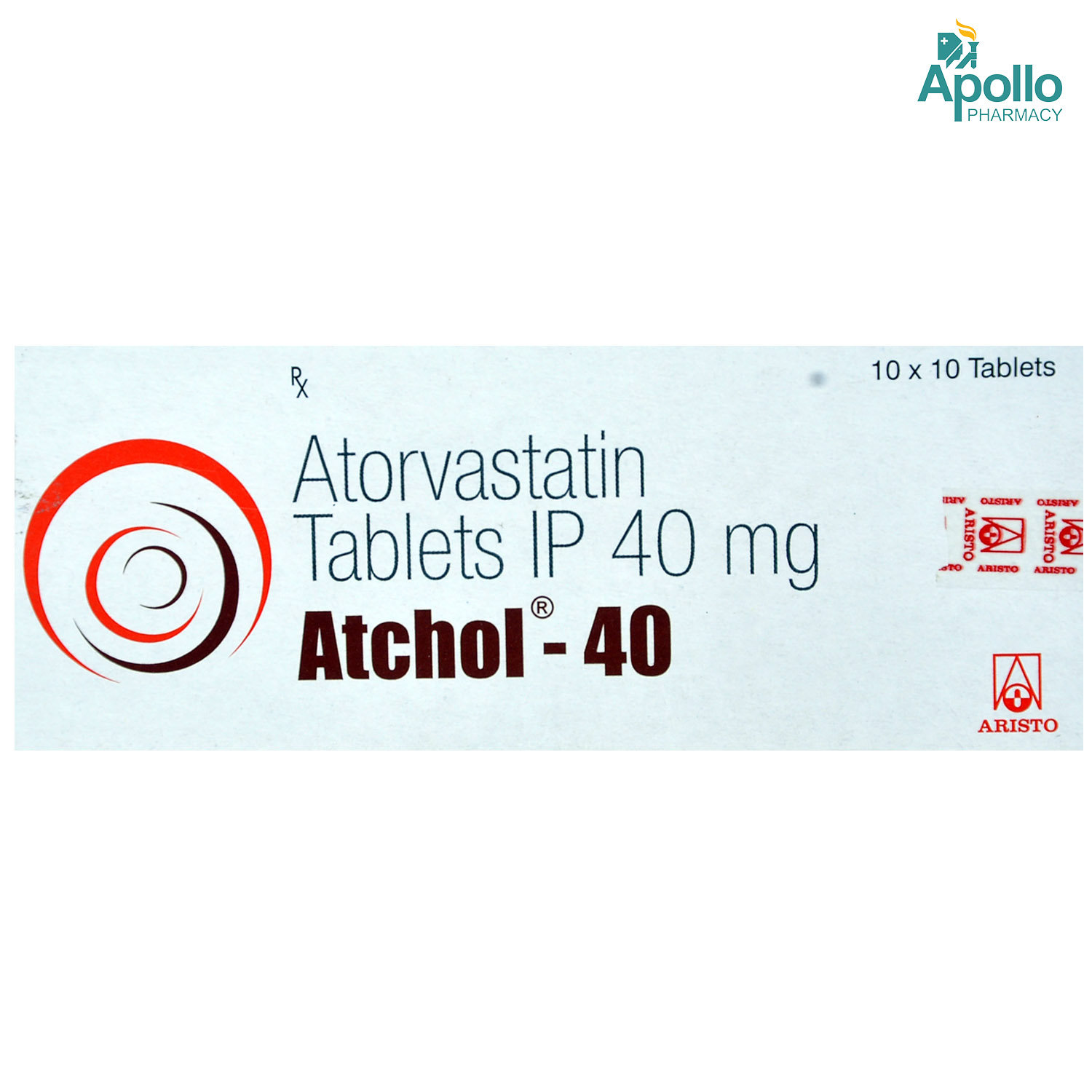

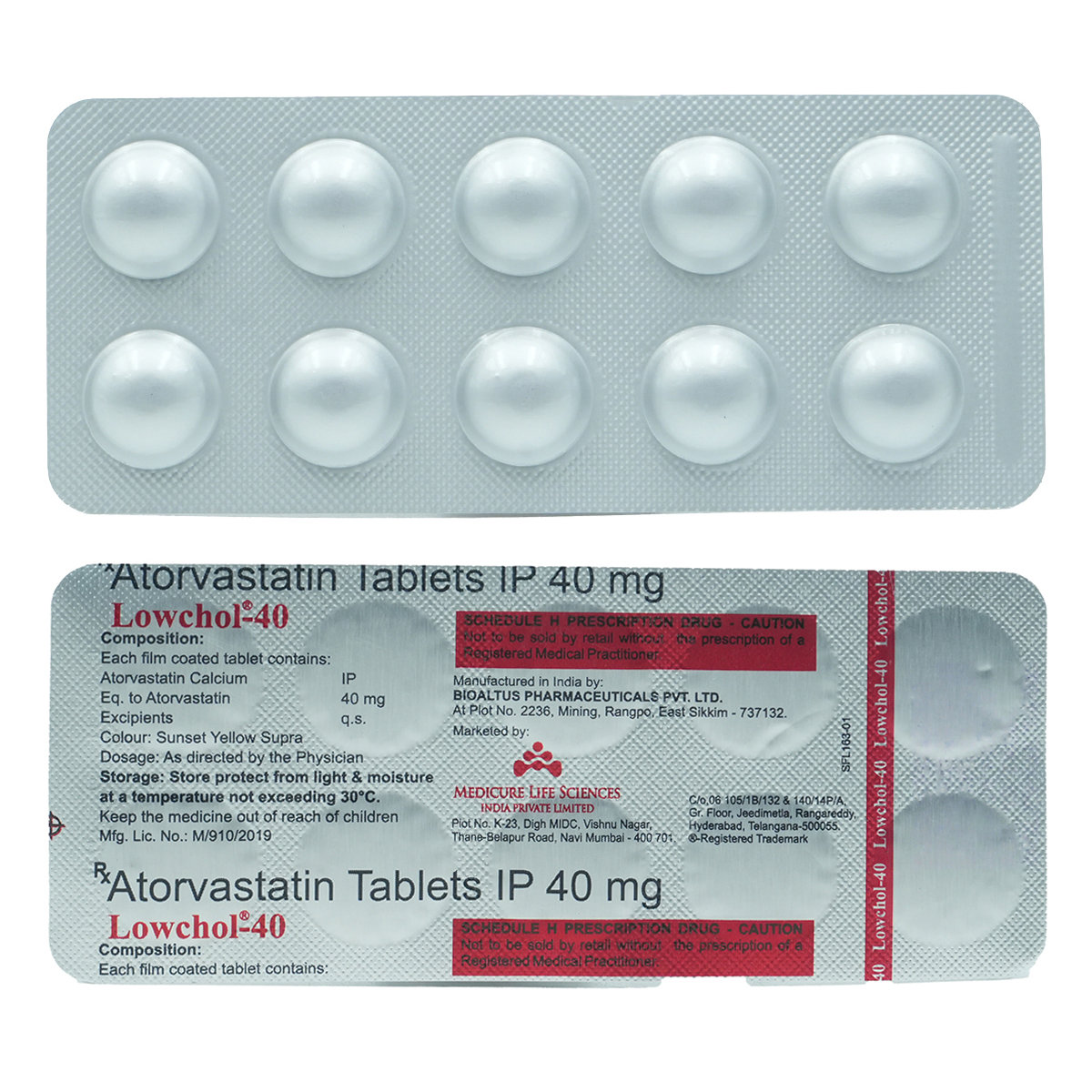



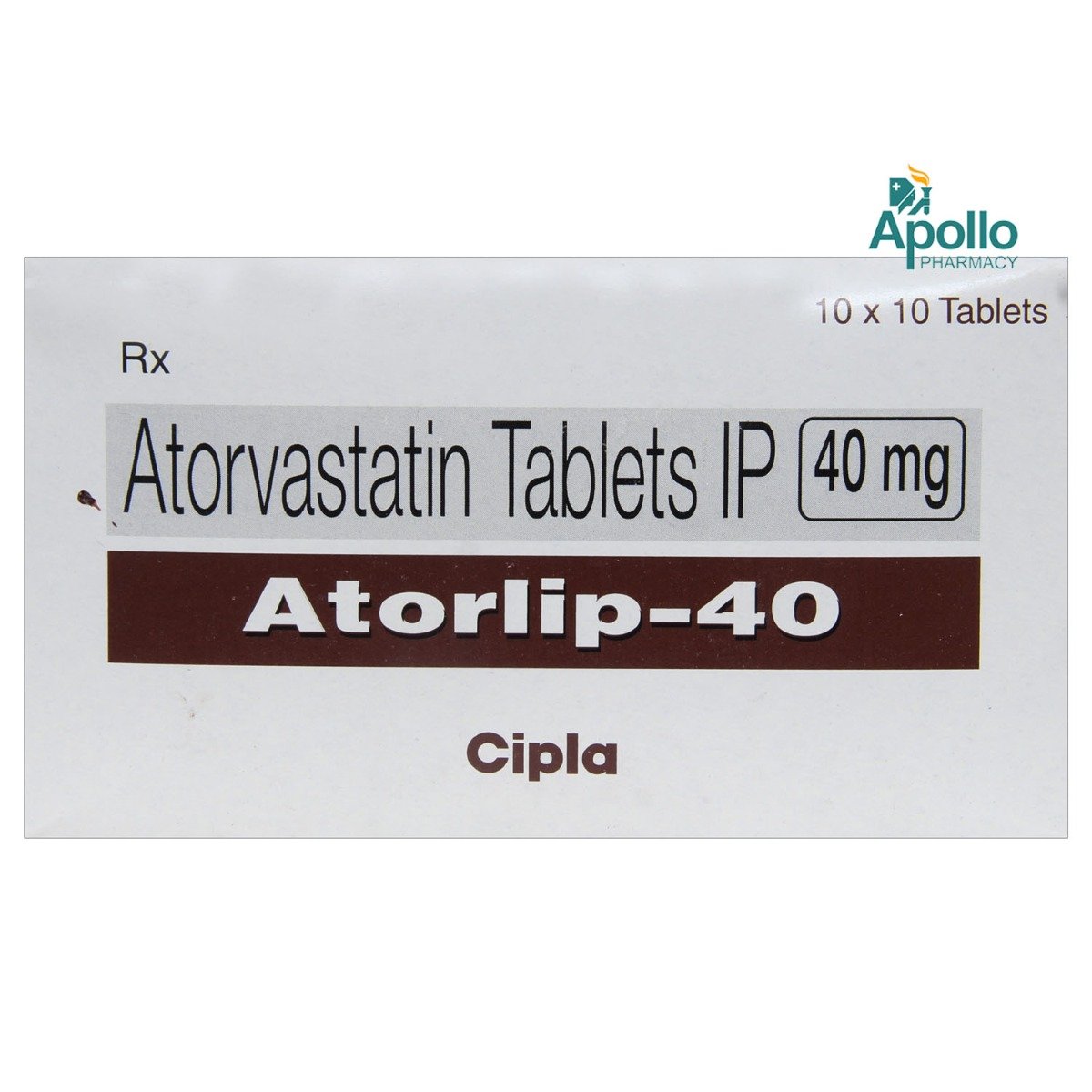
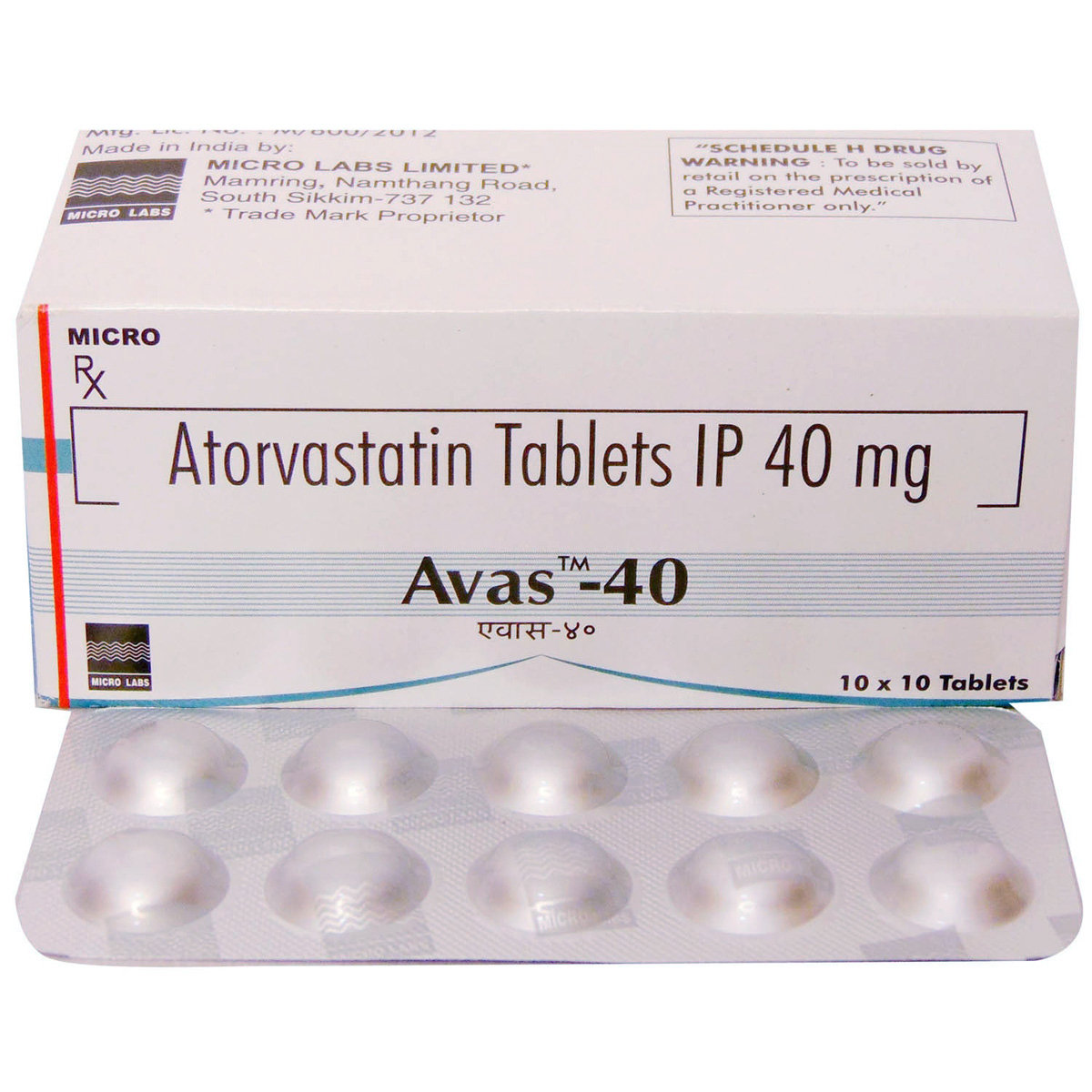
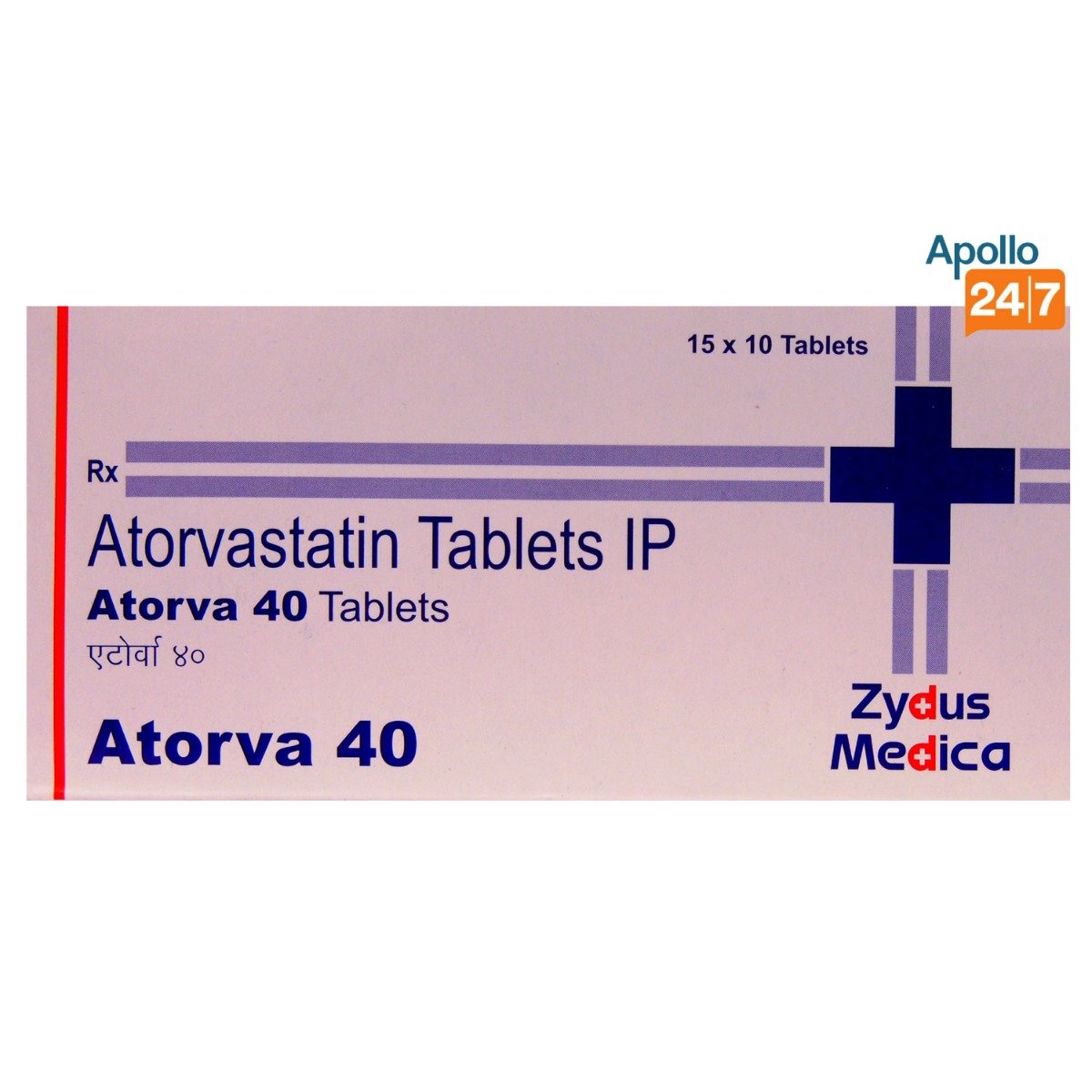
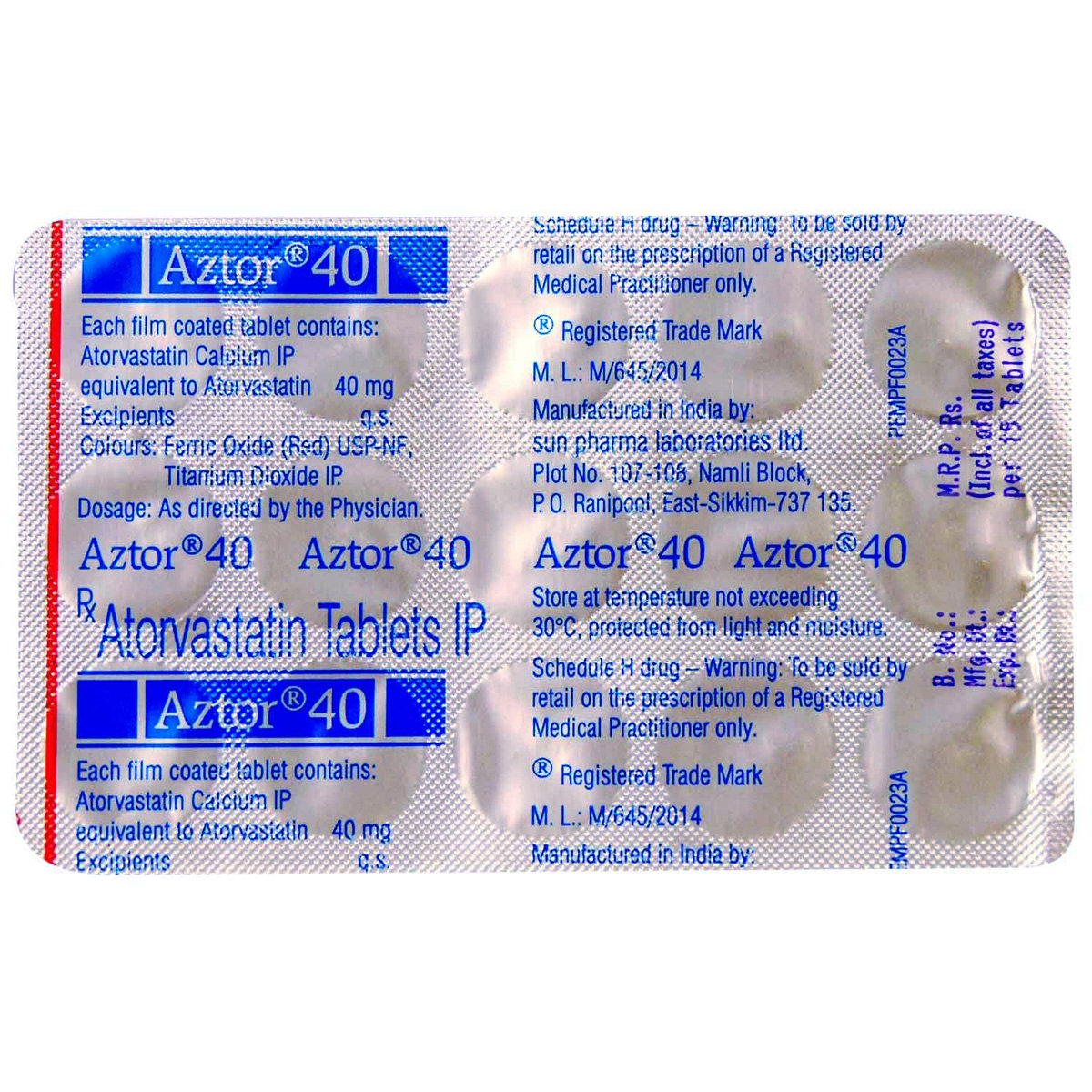



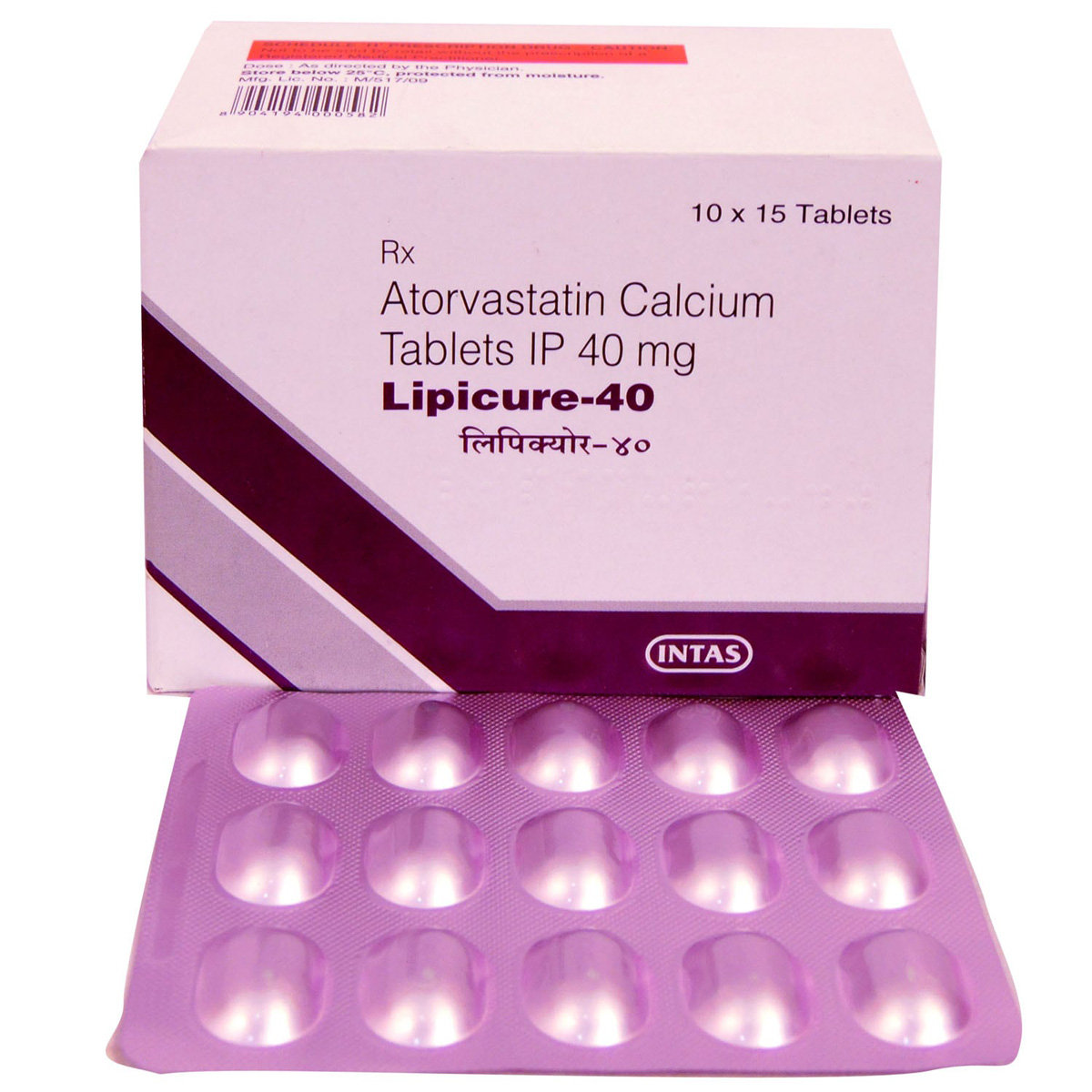
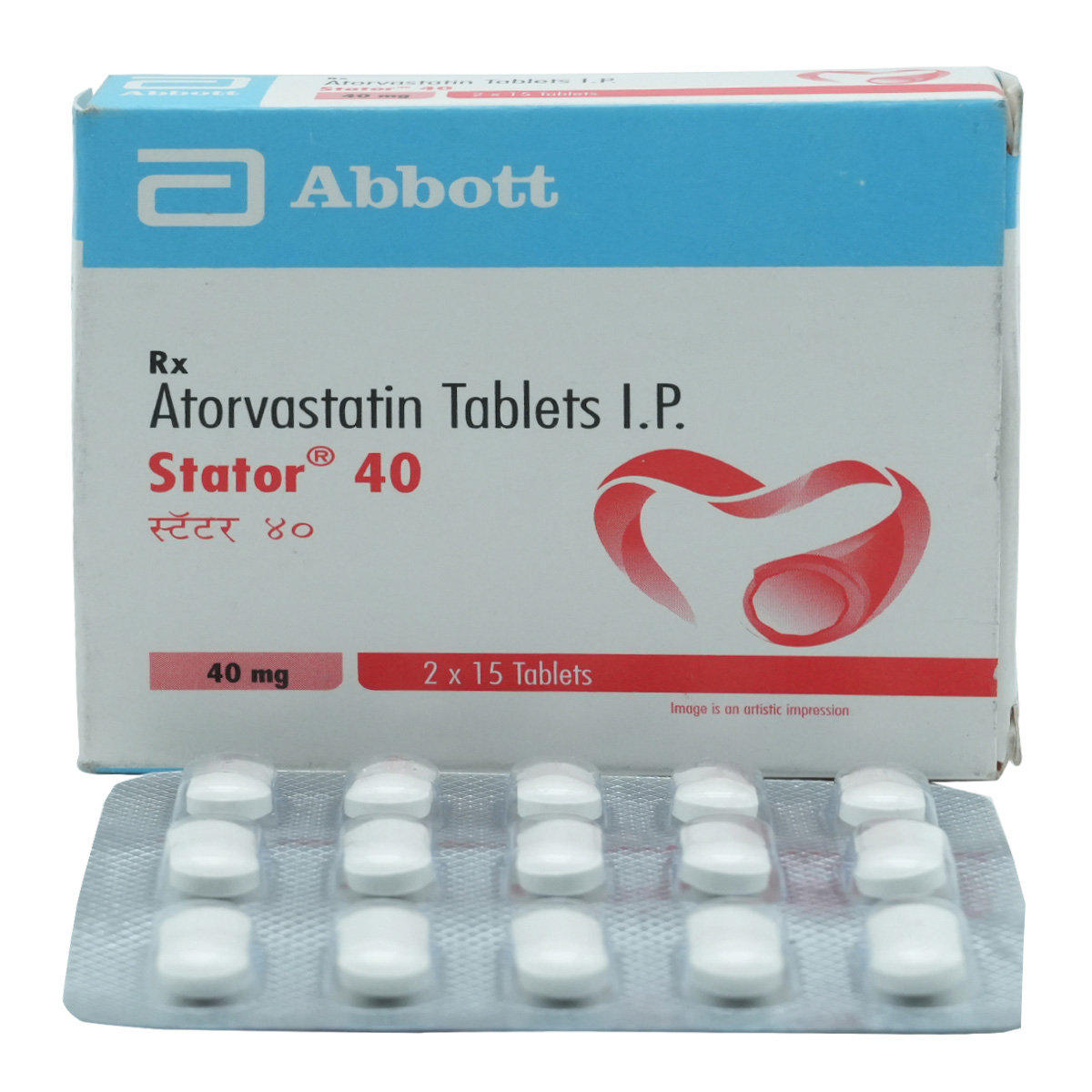


_0.jpg?tr=q-85)
